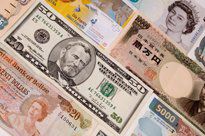What Is a Direct Quote?
A direct quote is a foreign exchange rate quoted in fixed units of foreign currency in variable amounts of the domestic currency. In other words, a direct currency quote asks what amount of domestic currency is needed to buy one unit of the foreign currency—most commonly the U.S. dollar (USD) in forex markets. In a direct quote, the foreign currency is the base currency, while the domestic currency is the counter currency or quote currency.
This can be contrasted with an indirect quote, in which the price of the domestic currency is expressed in terms of a foreign currency, or what is the amount of domestic currency received when one unit of the foreign currency is sold. Note that a quote involving two foreign currencies (or one not involving USD) is called a cross currency quote.
Key Takeaways
- A direct quote is a currency pair quote where the foreign currency is expressed in per-unit terms of the domestic currency.
- A direct quote gives you the quantity of local currency needed to purchase one unit of foreign currency.
- Because the U.S. dollar is the most traded currency in the world, the USD generally serves as the base currency in most direct quotes. Some major exceptions to this rule include the British pound and the euro.
Understanding Direct Quotes
The use of direct quotes versus indirect quotes depends on the location of the trader asking for the quote, as that determines which currency in the pair is domestic and which is foreign. Non-business publications and other media usually quote foreign exchange rates in direct terms for the ease of consumers. However, the foreign exchange market has quoting conventions that transcend local borders.
A direct quote can be compared to an indirect quote as its inverse, or by the following expression:
DQ = 1/IQ
Where:
- DQ = Direct Quote
- IQ = Indirect Quote
In a direct quote, a higher exchange rate implies that the domestic currency is depreciating or becoming weaker since the price of the foreign currency is effectively rising—and vice versa. Thus, if the USD/JPY (direct) quotation changes from 100 to 105, it indicates the yen is weakening against the dollar because it would take 5 more yen (the local currency) to buy 1 USD (the foreign currency).
U.S. Dollars
The U.S. dollar (USD) is the most actively traded currency in the world. In the context of trading rooms and professional publications, most currencies are quoted as the number of foreign currency units per dollar. This means that the dollar serves as the base currency, whether the speaker is in the United States or elsewhere.
An example of a direct quote using U.S. dollars might be stating $1.17 Canadian per U.S. dollar, rather than 85.5 U.S. cents per Canadian dollar, which would be the indirect quote.
British Pounds
A major exception to the dollar-base quote rule is when the British pound (GBP) is quoted against other currencies, including the dollar, but with the exception of the euro. This reflects the fact that the pound was the world’s dominant currency in the years leading up to World War II and before the ascendancy of the U.S. economy.
The exchange rate for the pound would thus be quoted as $1.45 per £1, regardless of whether this is considered direct (in the United States) or indirect (in the United Kingdom).
Euros
The euro (EUR) came into existence on Jan. 1, 1999 as the unit of account for participating European Union (EU) member nations; notes and coins were first issued on Jan. 1, 2002. The euro replaced many major traded European currencies, including the German mark, the French franc, and the Dutch guilder.
The European Central Bank (ECB), which oversaw the conversion, intended the currency to be the financial market’s dominant currency. It specified that the euro should always be the base currency whenever it is traded, including against both the U.S. dollar and the British pound. For this reason, quotes are always the number of dollars, pounds, Swiss francs, or Japanese yen needed to buy €1.

Leave a Reply